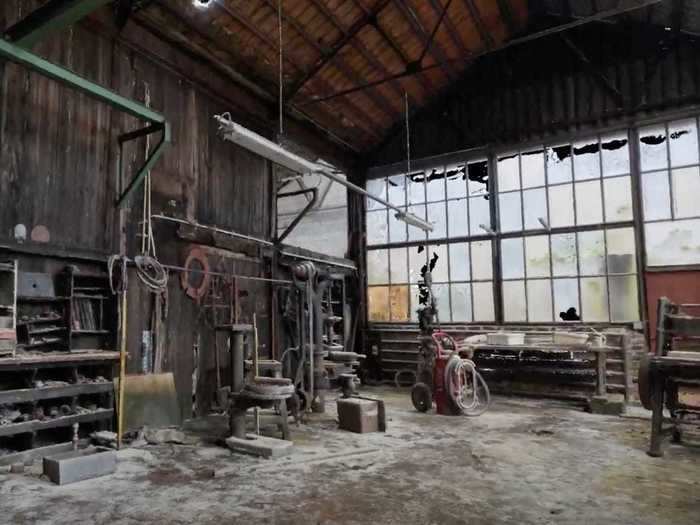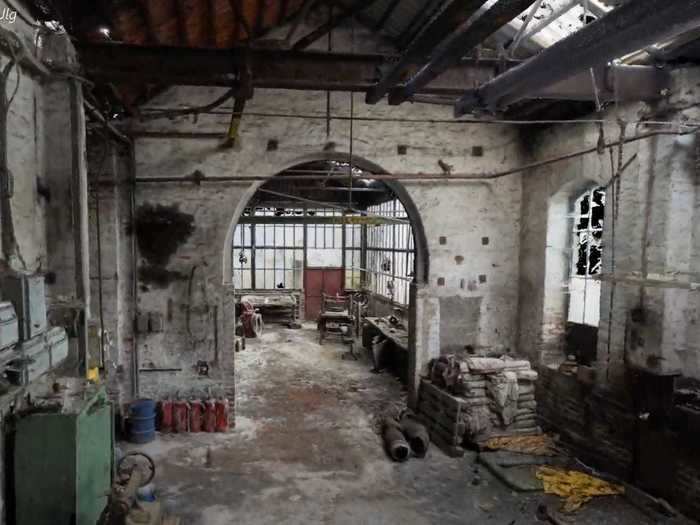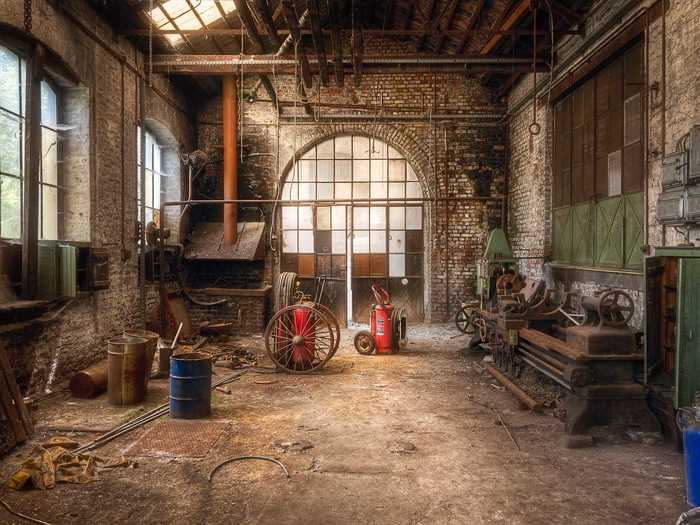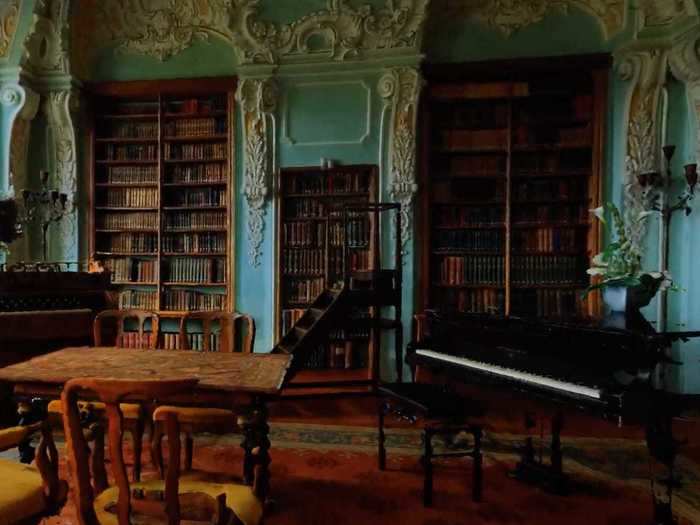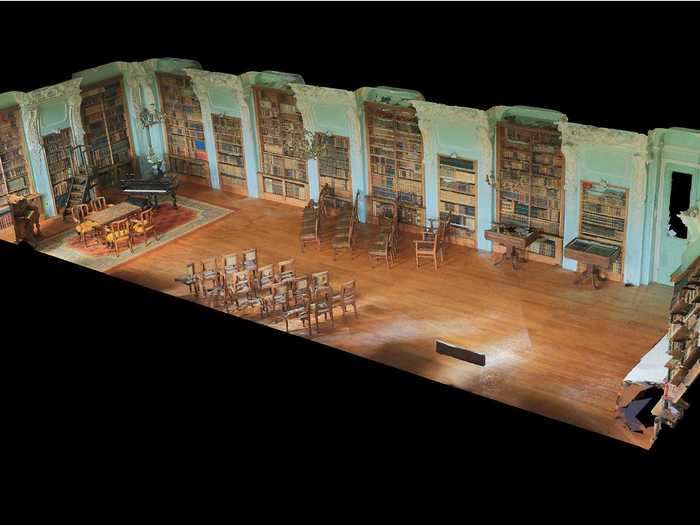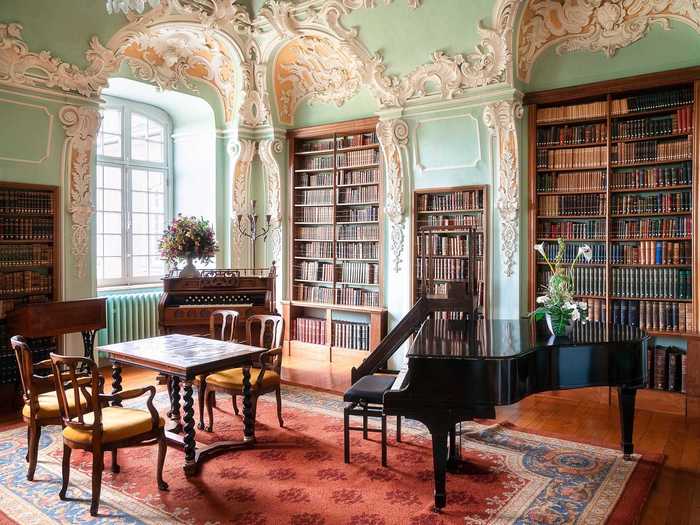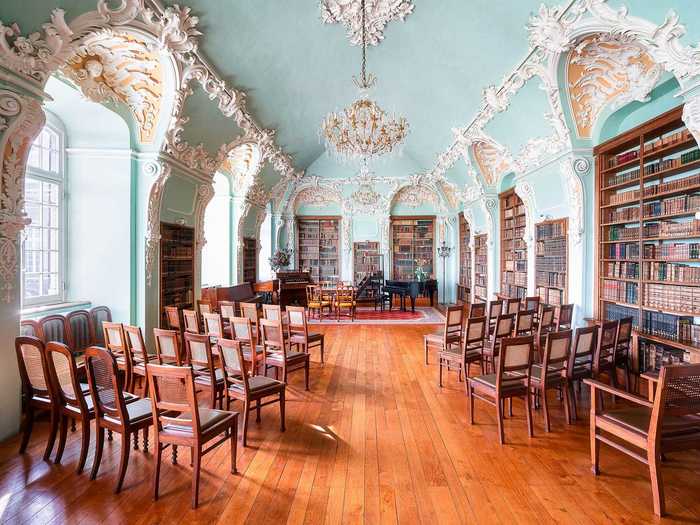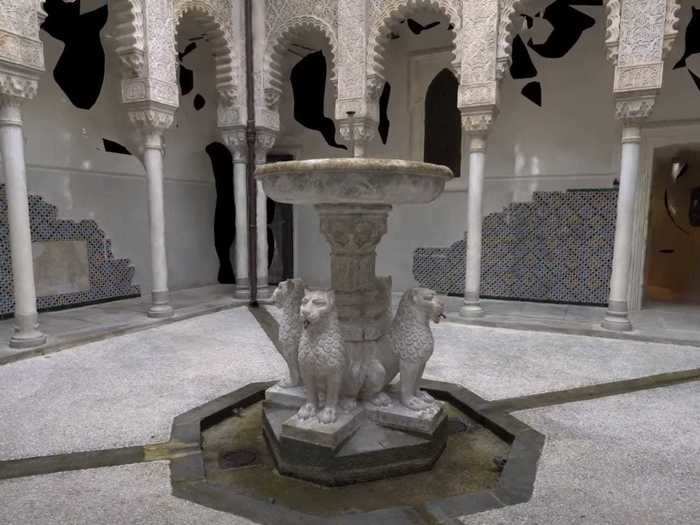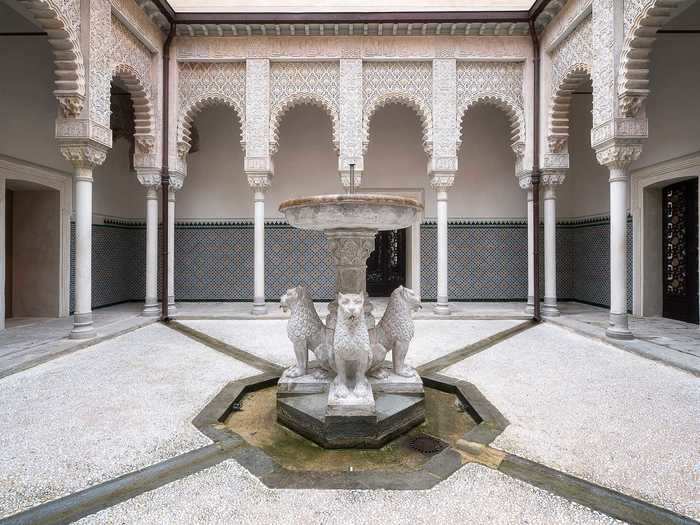The still photograph and 3D model of the Rococo library in the Netherlands.Roman Robroek
- Urban photographer Roman Robroek has captured eerie and awe-inspiring photos of abandoned places across the globe.
- In a new project, he set out to turn some of his photos into 3D models, allowing viewers to virtually step inside forgotten locations.
- Using innovative technology, Robroek and his project partner, Florent Poux, created videos of a forgotten Rococo library in the Netherlands, a forlorn wool-washing factory in Belgium, and a courtyard in an abandoned castle in Italy.
- Visit Insider's homepage for more stories.
Abandoned buildings are often found in some of the world's most remote locations.
However, new technology is allowing you to explore these long-forgotten places from the comfort of home.
Roman Robroek, an urban photographer born and raised in the Netherlands, has traveled across the world documenting abandoned Soviet spas, eerie churches, and more.
Over the past two years, Robroek has been turning his attention to another project. With the help of Florent Poux, an adjunct professor at the University of Liège and CEO of Geovast 3D, Robroek has been transforming his photographs into 3D models and videos that viewers can tour virtually.
"Florent approached me in 2017 after finding one of my articles about photographing abandoned buildings on Business Insider," Robroek said. "He saw us doing a project together, inspired by his passion for creating 3D objects from photographs.
"Shortly after he contacted me, I visited him at the University of Liège, and we talked about the techniques we use in both of our passions. We saw an opportunity and grabbed it. With a few challenges along the way, two years later we finished our first three projects."
Take a look inside the abandoned places Robroek has explored, and find out how to take a video tour of each location.
Read the original article on
Insider
Volunteers are working to transform the abandoned factory into a museum that visitors can tour — but for now, you can "visit" via the 3D model.
You can view the virtual tour for the abandoned wool-washing factory here.
The factory was the largest space that Robroek and Poux have converted into a 3D image.
"The most challenging part was working with the light. I never use anything else but natural light and a lot of the abandoned buildings I photograph are rather dark inside. Translating that to a 3D object was challenging," Robroek told Insider.
However, what Robroek and Poux were able to create was a stunning virtual tour of the space.
They also created a virtual tour of an abandoned wool-washing factory in Belgium.
Originally established in 1899, the factory was partially in use until the end of the 20th century.
Recreating it for a virtual tour came with a couple of challenges but even greater rewards.
Filled with eye-catching details like antique furniture and carved walls and ceilings, the library is a wonder to explore — both in person and virtually.
You can view the virtual tour for the Rococo library here.
What Robroek and Poux ended up with was an incredibly detailed, 3D version of the space.
They created a 360-degree interactive object from their images.
Certain objects, like the piano, reflected the light streaming in through the windows, which was hard to translate into a 3D model.
"Bits of really hard light were falling on objects like the piano. It's impossible to translate a reflective object with hard light on it to something viewable in a 3D object," Robroek said. "We learned to work with this along the way."
The second space they recreated using 3D imaging was this stunning Rococo library.
The library, which is located inside Rolduc, a large abbey complex in the Netherlands, dates back to before the 12th century and is considered to have one of the most important collections in the world.
In 1796, the abbey was dissolved and the buildings of the abbey were abandoned for 35 years. However, the site has since been converted into a hotel and conference center.
According to Robroek, creating the virtual tour of a space this large and detailed had its challenges.
It took 168 photos to create a video so that the courtyard could be toured virtually.
"The software we use automatically matches the position of each photo and combines them into a 3D object," Robroek said. "After that, I made a few close-up shots of the fountain to be able to extract the high level of detail at a millimeter precision in post-processing, which you can clearly see in the video."
You can view the virtual tour for the courtyard here.
The first photograph they turned into a 3D model was a courtyard inside Rocchetta Mattei, a castle in Italy.
Rocchetta Mattei was built in the 19th century by Count Cesare Mattei, on the site of an ancient medieval castle. Built by a described "madman" and the father of the supposed cancer treatment "electrohomeopathy," a medical practice that is not approved of in most countries worldwide, the castle was abandoned and fell into disrepair in the 1980s.
In the 2000s, the castle was restored and opened to the public as a historical site.
Robroek has since turned photos of the castle's courtyard into a 3D model so that it can be toured virtually.
"I created a circle in the room and took photographs. I started in one position, made three shots from different angles and then moved a step to my right. I repeated those steps until the circle was complete," Robroek said in a blog post explaining the process of using photogrammetry and lasergrammetry.

